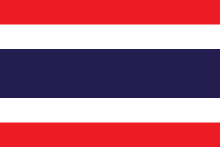Resource information
For rural women and men, land is often the most important household asset for supporting agricultural production and providing food security and nutrition. Evidence shows that secure land tenure is strongly associated with higher levels of investment and productivity in agriculture – and therefore with higher incomes and greater economic wellbeing. Secure land rights for women are often correlated with better outcomes for them and their families, including greater bargaining power at household and community levels, better child nutrition and lower levels of gender-based violence. However, in many parts of the world both men and women have inadequate access to secure rights over land. Women are particularly disadvantaged in this regard. Reliable, sex-disaggregated data on land is crucial for highlighting disparities in land rights between women and men; this enables us to improve policy formulation and to monitor progress towards gender equality in agriculture and land tenure. Although there are significant efforts underway to collect better and more relevant data on land rights, there is still a lack of understanding as to what data are available and needed, and what they can tell us about women’s land rights. This information brief highlights the key concepts around land rights, the various indicators that are needed to understand the gender gap, and the statistics available for each indicator. The brief also describes the issues surrounding the statistics, and offers potential policy responses for improving women’s land rights and the monitoring of those rights.



